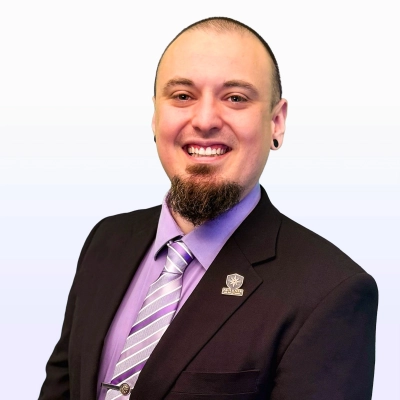6 Strategies for Fostering Innovation Culture in Tech Organizations
Innovation is the lifeblood of tech organizations, but fostering a culture that consistently sparks creativity can be challenging. This article explores powerful strategies for cultivating innovation, drawing on insights from industry experts who have successfully transformed their companies' approaches. From dedicated lab time to customer-focused problem boards, these methods offer practical ways to ignite creativity and drive meaningful progress in any tech-focused organization.
- Dedicated Lab Time Sparks Automation Breakthroughs
- Reverse Demos Empower Ground-Level Innovation
- Intentional Questioning Transforms Daily Interactions
- Cross-Functional Innovation Sprints Drive Experimentation
- Customer Problems Board Guides Development Focus
- Sledgehammer Sessions Deconstruct Processes for Improvement
Dedicated Lab Time Sparks Automation Breakthroughs
One strategy I've used to foster innovation is carving out dedicated "lab time" for my team to experiment with new tools and approaches outside of client work. Early on, I realized that when everyone's calendar was packed with tickets and projects, innovation got pushed aside. So we set aside a few hours each month where the only goal was to test something new—whether that was automating a repetitive task or piloting a new security tool. One of the best outcomes from this was a script a team member built that automated patch reporting, cutting what used to take hours of manual work down to minutes.
We measured impact by examining adoption—did the experiments result in usable improvements in our daily operations? In the case of the patch reporting automation, the time savings were immediate and measurable, freeing up our engineers to focus on higher-value work. That single initiative not only improved efficiency but also demonstrated to the team that their ideas could make a real difference. The success of that project built momentum, reinforcing the mindset that innovation doesn't always have to be big—it just has to make life better for the team and its clients.

Reverse Demos Empower Ground-Level Innovation
A strategy that has worked for me is creating "reverse demos," where instead of leadership presenting new tools or strategies, the engineers showcase small hacks or process improvements they've created in the flow of their work. One of the best outcomes occurred when a help desk technician demonstrated a simple yet clever tagging system in our ticketing platform, which allowed us to track recurring issues across clients. What seemed like a small tweak turned into a goldmine of data—we suddenly gained visibility into patterns that helped us proactively identify and fix root causes, rather than just closing tickets.
The impact was easy to measure: over the next two quarters, repeat incidents on those tagged issues dropped by nearly 30%. More importantly, it built momentum for innovation because the team saw that leadership valued and implemented ideas from every level of the organization. That one initiative—born out of a reverse demo—sparked a steady flow of creative fixes, and it showed me that the best way to foster innovation is to shine a spotlight on the ideas already happening at the ground level.
Intentional Questioning Transforms Daily Interactions
I helped my prior technology organization treat innovation as a way of leading people every day, not a project-bound expectation. We implemented deeper intentional questioning in daily interactions and meetings to build clarity, surface unknowns before assumptions, and then reframe goals and respond together using a simple Reflect, Reframe, Respond rhythm. The single initiative that made it stick was embedding this practice into one-on-ones and key meetings for problem-solving and project alignment. As for expanding the outcomes beyond simply innovation problem or product solutions, this fostered individual and team growth, a shared vision of success, stronger collaboration and empathy, and earlier detection of opportunities and risks. We tracked cross-role participation in decisions, decision quality and speed, rework and handoff quality, and engagement indicators of mutual accountability and collaboration.

Cross-Functional Innovation Sprints Drive Experimentation
One avenue used to support the creation of an innovative culture was the structuring of "innovation sprints" within the technology teams. These tended to be short bursts of intense effort where groups of cross-functional personnel would step away from their daily priorities to explore new ideas, try out new technologies, or simply envision a better way to accomplish an existing task. With a view toward encouraging experimentation, including failures created as learning moments, a culture of psychological safety was built into the program. Impacts were considered in terms of both qualitative and quantitative indicators, such as the number of prototypes formed, ideas turned into pilots, individuals engaged in innovation days, and whether projects contributed toward revenue or efficiency metrics. Another highly successful initiative offered employees a forum for submitting ideas for problems they wanted to solve.

Customer Problems Board Guides Development Focus
Our "customer problems board" is the core of our innovation philosophy. While we do some independent exploration into new services and solutions, we tend to let our customers' needs drive what we're trying to accomplish. Any problem, question, inconvenience, suggestion, or idea our customers have gets added to the list, and when employees have spare time in their schedules or when we're looking for a new project for one of our core development teams, we just go to the list. This not only provides us with more fresh ideas than we could ever hope to act on, it also does wonders for our customer relationships.
Sledgehammer Sessions Deconstruct Processes for Improvement
The most successful strategy I've used to drive innovation is something I call "Sledgehammer Sessions." Instead of asking teams how to improve a process, I ask them to intentionally break it within a controlled environment. The hope is that this deconstruction forces people to expose weak points, redundancies, and assumptions within the flow that we've been protecting out of habit. From there, we rebuild only what works.
We measured adoption and tracked process time in real time. To date, our biggest win came when a Sledgehammer Session exposed a promotion form that required five signatures before HR could even enter it. Cutting that to two signatures and routing it electronically reduced turnaround time from three weeks to four days. This led to employees and supervisors getting answers faster and HR not drowning in rework.




